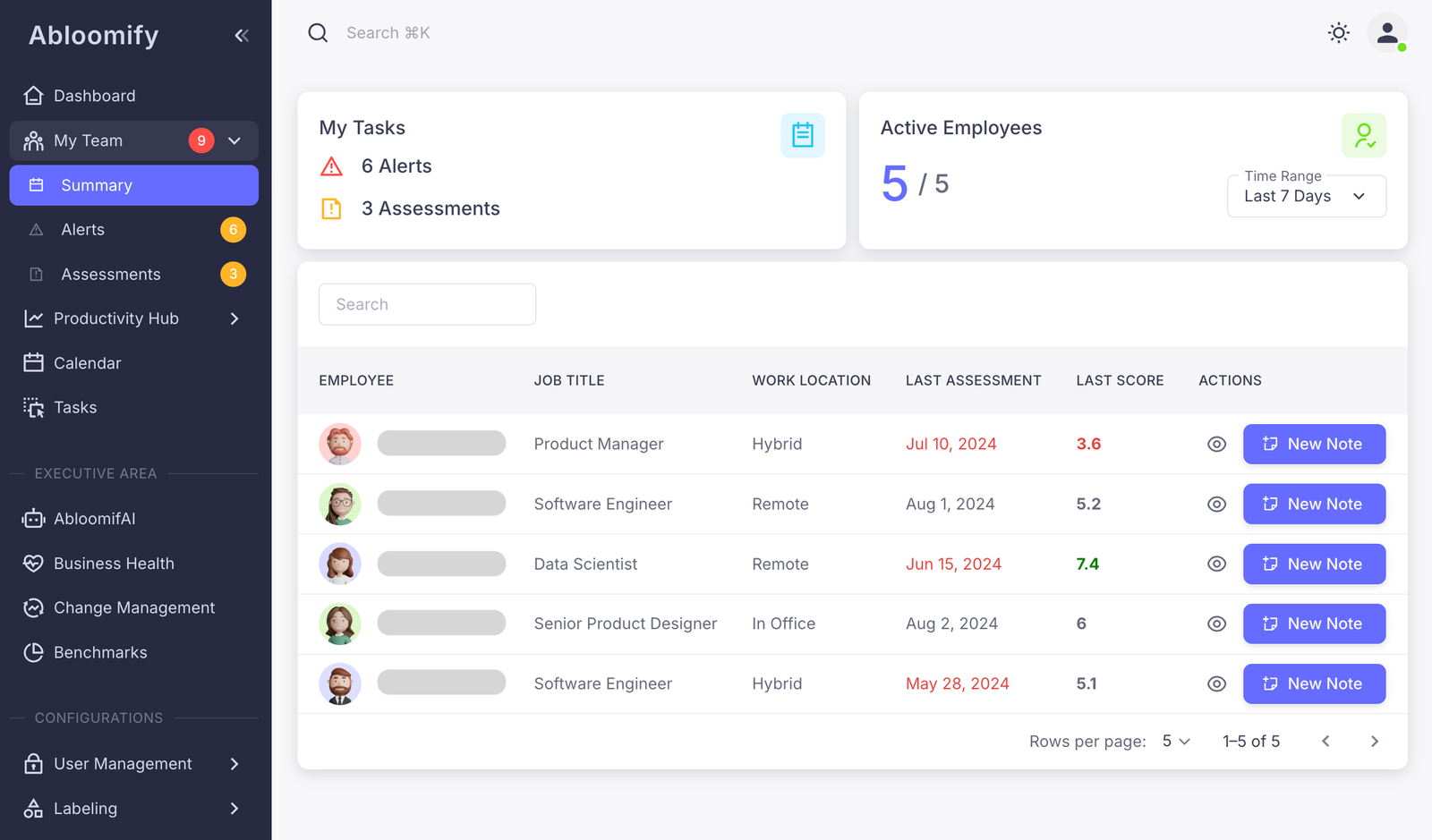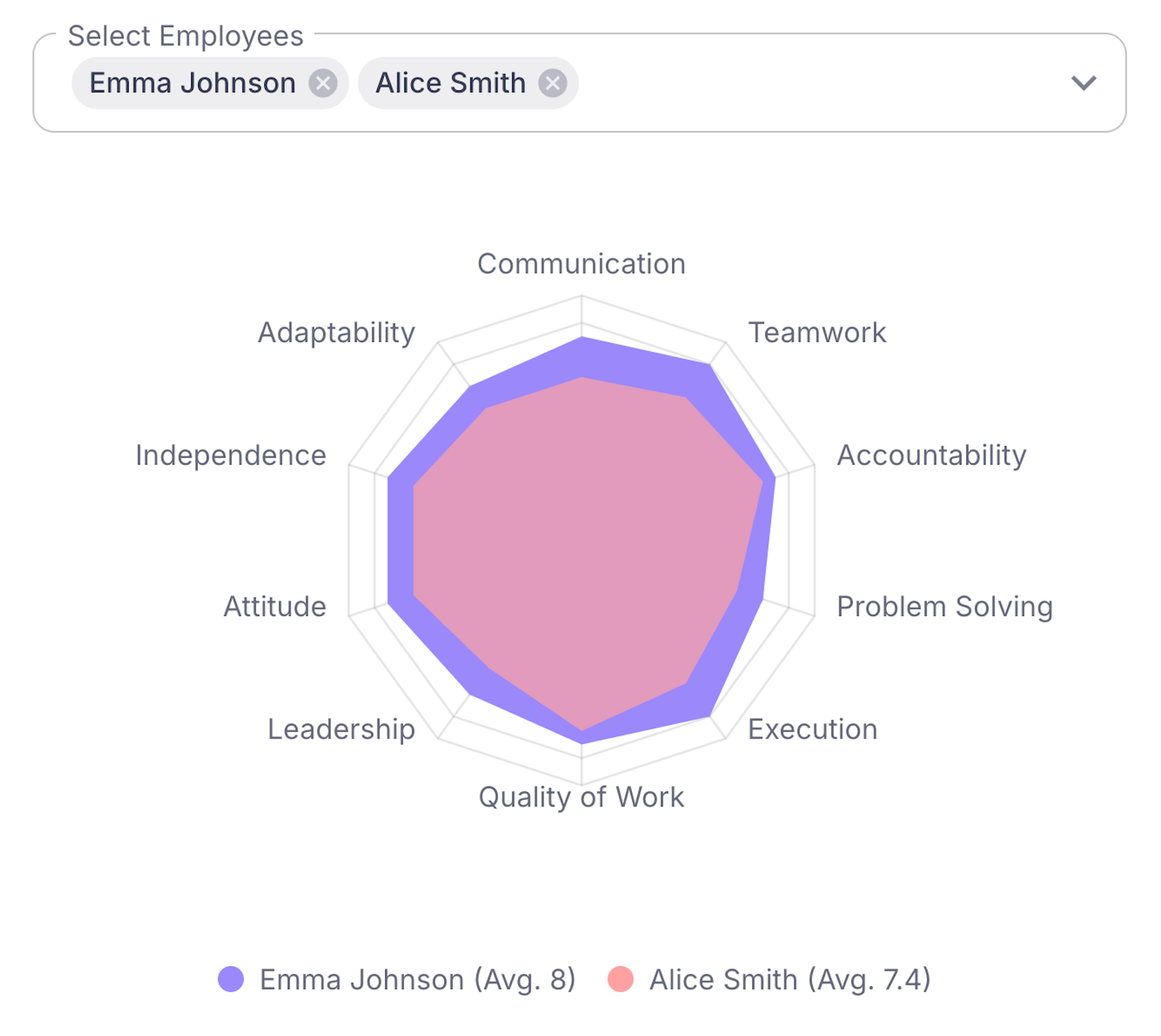Effective feedback processes are pivotal in driving software teams toward excellence. Optimizing these processes ensures that teams remain agile and productive, enhancing overall performance. This article delves into strategies for streamlining feedback mechanisms while leveraging cutting-edge tools to empower teams for sustainable growth.
The Importance of Effective Feedback
Effective feedback is the backbone of performance and team dynamics in software companies. When delivered constructively, feedback ignites motivation and boosts productivity. It acts as a mirror, reflecting strengths that can be leveraged and weaknesses that require correction. But the benefits extend beyond individual development.
– Improved Morale: Constructive feedback fosters trust and openness, leading to a supportive environment.
– Goal Alignment: Regular feedback aligns individual goals with team objectives, ensuring everyone moves in the same direction.
– Skill Enhancement: Employees gain a clearer understanding of performance expectations and can focus on skills in need of development.
Yet, without structured feedback, challenges arise. Teams may experience feelings of disconnect, leading to reduced performance. Unaddressed issues can fester, creating a toxic work environment. The absence of feedback loops results in employees feeling undervalued and unmotivated. This is where Abloomify’s solutions come into play. Harnessing AI, Abloomify provides actionable insights to prevent employee burnout and disengagement.
These advanced tools analyze engagement metrics, ensuring feedback is timely and relevant. By identifying early signs of disengagement, managers can take proactive measures. Abloomify’s solutions stand out, offering a tech-savvy approach to feedback management. This not only enhances team productivity, but also retains talent by addressing potential issues before they escalate. For a deeper dive into leveraging AI for feedback, check out Abloomify’s AI Tools for HR in Software Companies.
Streamlining Communication Channels
Efficient communication is the backbone of productive software teams. Miscommunication can lead to project delays and morale dips. To enhance feedback flow, optimizing communication channels is crucial. Here are key strategies to ensure seamless interaction:
- Implement standardized tools and protocols to maintain consistency. Platforms like Slack and Microsoft Teams can centralize communication, reducing reliance on emails and enabling real-time discussions.
- Incorporate audio and video tools for clarity. Google Meet and Zoom facilitate face-to-face interactions, crucial for remote teams to build rapport and maintain engagement.
- Encourage asynchronous communication, especially in global teams with time zone differences. Use platforms like Confluence or Notion where teams can share updates and feedback without requiring simultaneous online presence.
- Leverage technology to automate routine tasks. The AI Manager Copilot by Abloomify, for example, streamlines scheduling and prepares agendas, allowing team members to focus on meaningful feedback and discussions.
- Create a feedback culture by integrating informal and formal channels. Platforms emphasizing engagement can bridge gaps, promoting open dialogues and enhancing team dynamics.
AI-driven solutions like the AI Manager Copilot can transform team interactions by reducing manual burdens. This encourages more efficient and productive sessions. By deploying these strategies, software teams can ensure an optimized feedback process. To dive deeper into improving team communication, explore this guide on Improving Communication in Tech Teams.
Leveraging AI for Continuous Performance Assessment
AI-driven tools are becoming indispensable for continuous performance assessments in software teams. By integrating artificial intelligence, organizations not only gain efficiency but also uncover insights beyond human capability. Here’s how AI changes the game:
- Early detection of patterns: AI algorithms identify patterns indicating potential team or individual issues. This foresight allows managers to intervene early, preventing bigger challenges from unfolding.
- Real-time feedback: AI tools provide continuous feedback, ensuring that performance assessments are not just periodic but ongoing. This helps teams quickly adjust and align their efforts with organizational goals.
- Data-driven insights: With AI, leaders have access to comprehensive data, making it easier to understand both team dynamics and individual contributions. This data-driven approach aids in crafting more effective interventions.
- Enhanced productivity: AI eliminates manual performance tracking, reducing human error and freeing up time for creative problem-solving and leadership activities.
Abloomify offers capabilities in continuous assessments that underscore these advantages. By leveraging AI insights, Abloomify provides leaders with timely, actionable insights, ensuring sustained performance. This technology helps to streamline performance reviews and enhances the leadership capabilities of software industry professionals.
For further exploration on how AI optimizes performance management, explore AI solutions for retention in the tech industry. These advancements represent a significant shift toward proactive, rather than reactive, performance management, paving the way for future industry innovations.
360-Degree Feedback for Holistic Improvement
360-degree feedback has emerged as a valuable asset in the realm of holistic team assessment. It involves collecting feedback from all directions—peers, subordinates, and superiors—to create a comprehensive view of each team member’s performance. This approach not only enhances individual growth but nurtures team development. By implementing 360-degree feedback systems, organizations can foster a culture of continuous improvement and transparency.
The key benefits of 360-degree feedback include:
- Diversity of Perspectives: Provides a more rounded view of performance by considering multiple viewpoints.
- Enhanced Self-awareness: Encourages individuals to reflect on their strengths and areas for improvement.
- Improved Team Dynamics: Encourages open communication and builds stronger team relationships.
- Identification of Leadership Potential: Highlights future leaders by identifying strong interpersonal and professional skills.
Effective collection and summarization of feedback is crucial for success. Best practices involve maintaining anonymity, ensuring relevance by selecting the right reviewers, and providing actionable insights. Tools like Abloomify’s feedback collection solutions streamline this process, saving time while delivering deep insights into team dynamics and individual contributions. These tools help collate feedback seamlessly, provide clear analytics, and enable targeted development plans for each team member. Take a look at their performance review insights for more in-depth guidance on leveraging technology for feedback optimization.
This approach creates a foundation for continuous, constructive dialogue that empowers both individuals and teams, making it easier to balance workloads and achieve optimal productivity.
Balancing Workload for Optimal Productivity
Balancing workload in tech teams involves more than just distributing tasks equally. Effective capacity planning requires understanding individual strengths, current workloads, and team dynamics. Let’s explore how we optimize team productivity while preventing burnout.
Abloomify’s workforce planning tools provide flexible insights to help managers keep workloads balanced. These tools cater to various team formats, from office-centric to remote. Here’s how they can optimize productivity:
- Real-time Analytics: Provides visibility into current workloads and forecasts potential overloads.
- Customizable Dashboards: Allow managers to track team performance and adjust tasks accordingly.
- AI Predictions: Insights into future capacity needs help anticipate team rushes or slow periods.
- Adaptive Task Allocation: Automatically reallocates work based on team capacity and project priorities.
By leveraging such features, teams can mitigate risks of burnout. When employees feel their workloads are manageable, engagement and productivity increase.
Moreover, Abloomify adapts to different work environments, supporting office, hybrid, and remote setups. This flexibility ensures that no matter where your team is, their workload is balanced and productivity is optimized.
For those looking to harness the power of technology in workforce planning, consider Abloomify’s insights into workforce management. This approach leads to not only healthier teams but also more consistent outputs, laying the groundwork for continued team development and career growth, as explored in the next chapter.
Developing Skills and Career Path in Tech Teams
Cultivating growth within tech teams hinges on developing skills and outlining clear career paths. Structured feedback and AI tools can serve as vital components in career development strategies. They provide clarity for both employees and leaders, promoting a culture rich in growth and innovation.
Leaders should prioritize feedback mechanisms that are both timely and constructive. This builds a loop of continuous improvement, allowing team members to refine their skills. Feedback should be tailored and relevant, addressing individual goals and aligning with organizational objectives.
A few strategies to optimize skills development and career progression include:
- Encouraging mentorship programs where seasoned professionals guide newer team members.
- Offering workshops and e-learning modules suited to distinct technical needs.
- Implementing rotational roles to diversify skill sets and perspectives.
Engaging employees in their own growth fosters loyalty and enhances retention. Seeing a clear path and having tools to traverse it leads to increased motivation and productivity. Abloomify’s AI-powered career path planning tools exemplify this integration by aligning employee aspirations with company objectives. They offer visual maps of potential career trajectories, facilitating self-driven progress and goal alignment.
Incorporating AI allows organizations to maintain an adaptive learning environment, where employees are equipped to navigate evolving demands. For further insights into leveraging AI for human resources, explore the benefits of AI solutions for retention in the tech industry.
By investing in personal and professional development, leaders create teams that are not only skilled but also engaged and purpose-driven, fueling sustainable growth.
Integrating Feedback Systems Seamlessly
Seamlessly integrating feedback systems like Abloomify into existing tech ecosystems requires strategy and finesse. The objective is to enhance team performance insights without derailing current operations. Start by evaluating your current tools and workflows. Identifying compatibility and potential integration points is crucial. Many teams use platforms such as Jira, Slack, or Microsoft Teams. Ensure that Abloomify can smoothly sync with these tools to gather and deliver insights without additional friction. This process should include:
- Mapping existing workflows and pinpointing where feedback naturally occurs.
- Engaging team members to gather input on integration needs and preferences.
- Testing integration in a controlled environment to ensure smooth data flow and minimize disruptions.
Once mapped, leverage Abloomify’s APIs for a seamless data exchange. This allows feedback to be captured and analyzed in real-time, enabling teams to stay responsive in a dynamic business landscape. It’s critical to maintain a balance between automation and human oversight. Leaders must ensure feedback does not become just another data point but a tool for actionable insights. By adopting these strategies, organizations can better navigate today’s complex tech landscape.
Looking for more ways to enhance your team’s productivity with digital tools? Explore choosing the right team productivity tools for IT professionals and set your team up for sustained success.
Delivering Impact with Data-Driven Insights
Data-driven insights are revolutionizing the feedback landscape in the software industry. When leveraged correctly, they do not just inform; they transform. Here’s how you can harness their power to make a lasting impact:
- Use Actionable Insights: Data should guide decision-making, not overwhelm it. Focus on digestible insights that provide clear action points.
- Inform Coaching: Tailor your coaching strategies using data. Customize your approach to meet the unique needs of individual team members, enhancing productivity.
- Foster a Feedback-Rich Culture: Encourage openness where data supports conversations. This promotes a culture where feedback is a continuous, communal effort.
- Monitor Progress: Track improvements over time to ensure initiatives are proactive. Use data analytics to spotlight areas needing attention, preventing minor issues from escalating.
- Celebrate Wins: Use data to recognize achievements. Acknowledging progress and success keeps teams motivated and aligned with organizational goals.
Leadership in tech isn’t about reacting to data but using it to forecast and innovate. By tapping into these insights, leaders can shape agile, high-performance teams prepared to meet future challenges.
Ultimately, data can be a powerful ally in the feedback process, but its value only emerges when used effectively. Ready to start optimizing your feedback processes? Explore innovative HR tech solutions for software companies to enhance your team’s productivity. MotionEvent these steps, data-driven insights will empower your team to reach new heights.
Final words
Embracing modern feedback systems in the software industry is crucial to maintaining high-performing teams. Leveraging AI-driven insights, like Abloomify offers, can drastically enhance productivity and employee satisfaction. By optimizing feedback processes, managers can not only improve individual performance but also propel their teams and organizations toward sustainable success.



